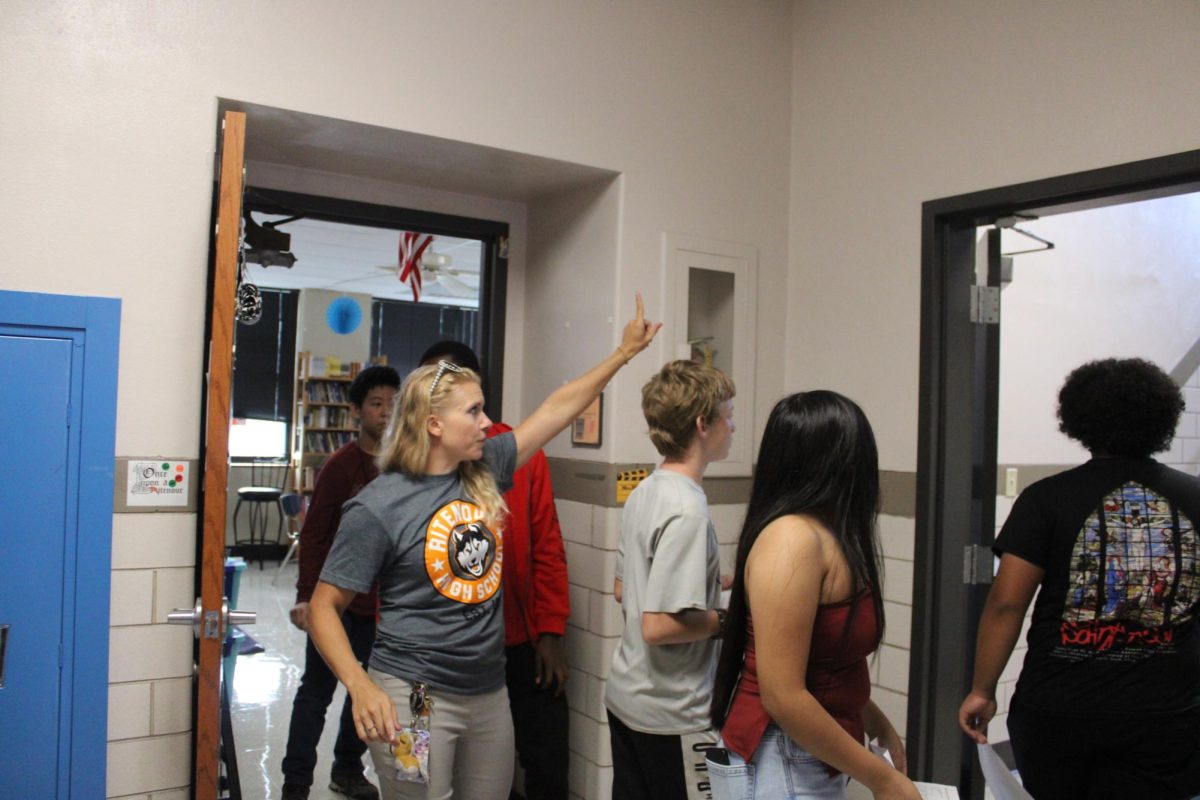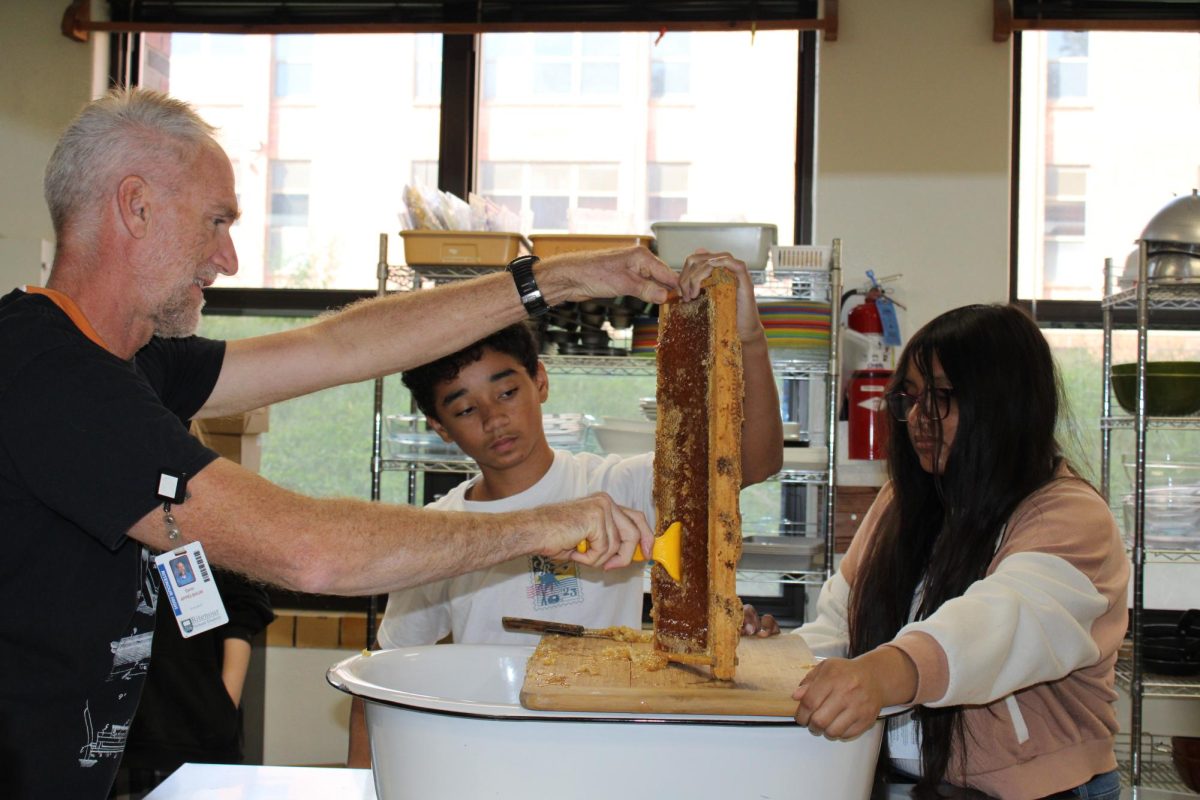As the first semester of Ritenour’s bold transition to Competency-Based Education (CBE) draws to a close, the district is reflecting on both the promise and challenges of its new grading system.
In theory, this system promises a more personalized, efficient, and equitable pathway to education. But despite the growing enthusiasm for CBE, schools, and educators are finding that implementing this ambitious model is not as simple as it may seem.
At its core, CBE allows students to progress at their own pace, mastering content before moving on to the next unit or level. This contrasts sharply with the traditional model, where students are often promoted based on time spent in class, or grades that incoporate behavior rather than actual knowledge or skills gained. Advocates argue that CBE addresses individual learning needs, supports deeper learning, and provides greater opportunities for success for all students.
“It’s allowed teachers to look at their classes and what they’ve been teaching and make decisions on what are the most important topics that they really need to cover and then clearly identify what skills students need to have, what knowledge they need to have, and then how they want the students to be able to apply that knowledge,” science teacher Rob Weissler said. “I think it’s given teachers a chance to kind of refresh how they’re looking at education, because it’s really forced us to think differently about grading and how to show students how they’re doing by giving them targeted feedback, as opposed to an old system of just percentages.”
In theory, CBE seems like a dream come true. It aims to ensure that students are not left behind simply because they need more time to grasp a particular concept or skill. By allowing learners to progress only when they have demonstrated full understanding, CBE promises an education that adapts to individual needs, encouraging deeper engagement with the material.
“In my area of Culinary Arts, it has made it easier for students. It has helped the students in the Culinary Pathway show what they know and can do. It kind of has always worked that way for me. When you teach a hands-on class this system lends itself better to it,” family and consumer science teacher Nina Ballmann said.
The model is particularly praised for its potential to support at-risk students, as well as those who may feel stifled by the traditional pace of education.
“I think when competency-based education is being implemented the way it’s meant to be implemented, students are able to sit down in either small groups or one on-one with their teacher more often to get tailored support.
So my hope is that for the majority of the students in our high school, they are seeing that level of support if they need it,” English language learner teacher Amy Metz said.
The flexibility built into CBE models means that students can progress as quickly or slowly as necessary, allowing for a more customized educational experience. Whether it’s through online platforms or more traditional classroom settings, CBE promises to cater to students’ specific needs, empowering them to take ownership of their learning.
“I think one of the major benefits is I now have students asking me more often than before to help them look at their progress, look at their interpretation of their progress into what an end of semester end of year grade might be.
So I think students are quite a bit more invested in looking at the progress they’re making over time rather than just checking it right before a semester ends just to see if they’ve gotten lucky per se and are going to earn credit,” Metz said.
However, while the concept of CBE sounds promising, the reality of implementing it in schools has proven to be much more complex. Ritenour’s adoption of CBE has faced a variety of obstacles, ranging from logistical hurdles to the ability of teachers to adapt to new methodologies.
“Overhauling a grading system that we’ve used forever is going to present a lot of different challenges. The first challenge is simply, how do I use the software? Now once I know how to use the software, how do I use it more effectively?
How do I communicate this with students, how do I communicate this with parents? How do I make sure that I’m using it right? I don’t want to make a mistake on my end to negatively affect a student,” English teacher Molly Dahlquist said.
As Ritenour has implemented CBE, especially on such a large scale, technology infrastructure has been a significant barrier. Before Ritenour made the change to CBE there was not a digital platform to help deliver the kind of individualized learning experiences CBE requires. CBE required Ritenour to switch its SIS (Student Information System) and grading platform from Tyler SIS to two separate systems to accommodate the switch.
“The challenges are mostly just logistical or technological things. For example, we’ve had so many glitches with the progress tracking grading system we’re using. I think we really believe in what Empower could and should be for teachers and students.
It just, to this point, hasn’t quite worked that way,” Metz said.
Another significant issue is teacher preparation and understanding. The shift from a traditional, lecture-based model to one focused on individual mastery demands a dramatic rethinking of how educators are trained and how they interact with students. Teachers must be proficient at tracking individual progress, offering personalized support, and developing instructional strategies that cater to diverse learning needs. Many teachers are still so used to the traditional model of education.
“I think it’s made us take a step back and look at what we teach on a day-to-day basis, and really make sure there are our lessons that have a value to the outcome that we intend, I think it’s made teachers be a lot more intentional with our teaching and with our lessons and I think that part of it has been good,” Dahlquist said.
Categories:
Ritenour fully embraces competency based education in first semester
The district initiative experienced some bumps in first semester, but teachers believe it can be extremely helpful for Ritenour learners
Logan Simpson
January 29, 2025
Aryana Wilson
FACS teacher Abigail Russell points out the proficiency scale that her students will be completing during that class period. Proficiency scales are based on the state standards and help focus the teachers to know exactly what students need to learn.
Story continues below advertisement
0







